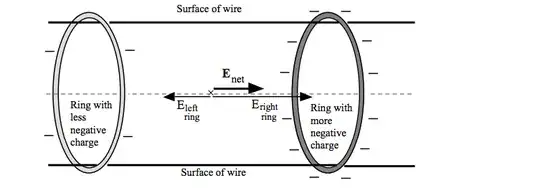I'm reading Sherwood and Chabay's brilliant textbook Matter and Interactions, in particular the section that deals with how the surface charges in an electric circuit distribute themselves to generate the electric field within the wire.
One question left unanswered, however, is why the generated electric field does not affect the surface charges themselves, only the electrons flowing through the wire.
In the above picture, wouldn't the charges on the rings also be affected by each other and the other ring?
